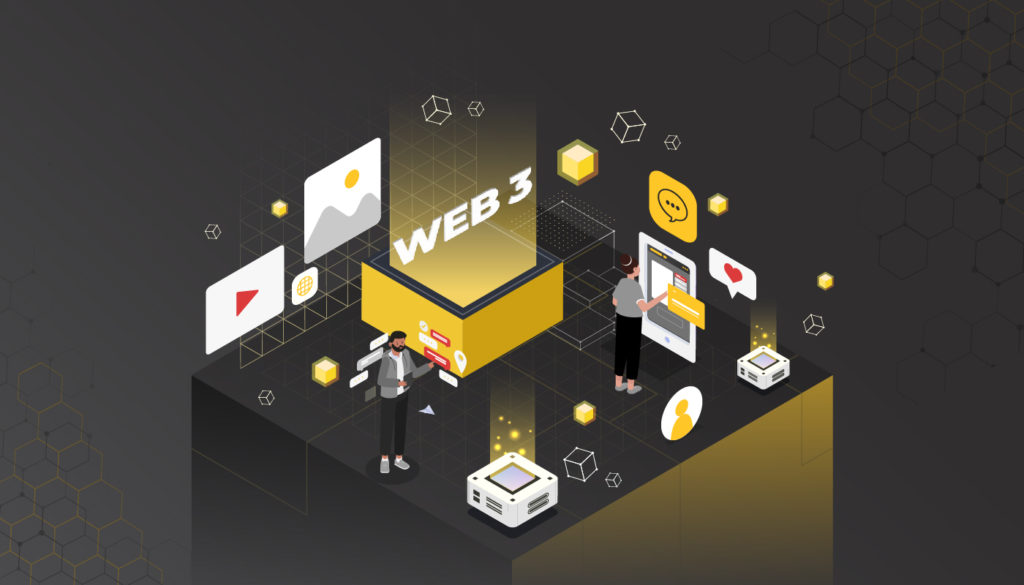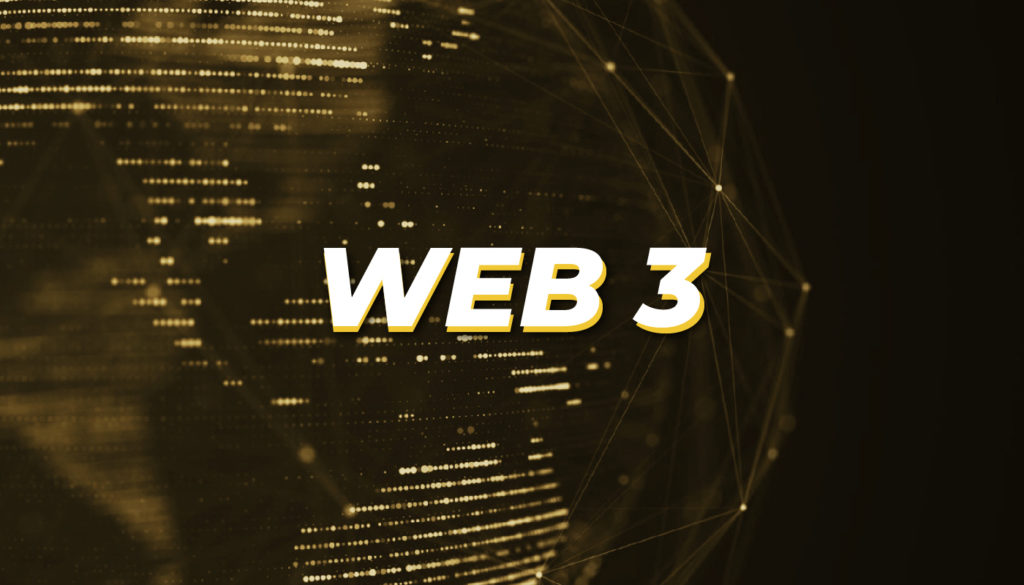
In 2021, Web2 mainstays Spotify and Youtube paid an average of $636 per artist and $2.47 per channel, respectively.
In the same year, blockchain-based Web3 platforms paid creators an average of $174,000!
Of course, there are way fewer users on Web3 platforms compared to Web2. Despite that, just by cutting out the middlemen, the potential for creators to actually earn liveable wages is much higher on Web3. Why is that?
First, let’s take a look at what the creator economy actually is.
What Is The Creator Economy (and Why Should We Care?)
If you consume content (like this blog), you’re a part of the creator economy – and as this ecosystem scales, it will impact your digital interactions, workplace interactions, and more.
The creator economy was born just a decade ago when users of different online platforms began publishing content.
Fifty million content creators and curators make up this space as of today. And these creators haven’t been fairly rewarded for their efforts, even though they’re part of an industry valued at $104 billion.
Quite frankly, it’s starting to take it’s toll.
When Creators Grow Big
When creators get more visibility, they and their followers generally get ‘locked in’ to the platform they’re on. This means that a creator’s hard work, amassed following, and content don’t travel with them if they — one day — decide to bail on a platform or if the platform goes out of business.
Users can even be censored or booted by these private companies. Facebook, Microsoft, Amazon, Apple, and Google — the most significant players and controllers of our time on the internet have become far too powerful. These platforms could engage in monopolistic practices and stifle innovation.
Behind all the smiling selfies, fun videos, and blooper footage is the risk of burnout. As mentioned in this Fast Company article, a survey found that 90 percent of creators experienced burnout, and 71percent said it made them consider quitting.
There is a constant need to scale, grow, and maintain momentum. One must always be visible or risk being forgotten. The environment is highly competitive, and the stakes are high in this winner take all game.
Despite this, the likes, followers, streaming royalties, and one-time creator fund payouts are not paying the bills for most creators. For the majority of participants, the gains are insufficient to sustain them in this multi-billion dollar industry.
The possibilities of Web3 promise to bring relief to these creators. Web3 can potentially give birth to the ‘middle class’ of creators, a median group missing from this economy. This mid-level creator can build, sustain, and port their community without friction.
So what is Web3? Web3 is the future of the internet and the successor to Web2, which was the successor to Web1.
What is Web3?
Web2 is the internet as we know it today. It empowered creators and brought about the gig economy, which enabled creators to earn money through alternate revenue streams. But Web2 has an Achilles Heel — users that create data don’t necessarily own it.
We trust Web2 platforms to work with us and for us. And we have to operate under the assumption that they won’t be evil.
But as we have seen, that is not always the case.
All it took was a massive crypto bull run to shine the light on Web3 and decentralised web solutions. Web3 is the next iteration of the internet which is decentralised, blockchain-based, and uses cryptocurrencies, NFTs (Non Fungible Tokens) and DAOs (Decentralised Autonomous Organisation) to give power back to the users.
As Chris Dixon, Partner at VC firm Andreessen Horowitz puts it, Web3 will transform the internet from “don’t be evil” to “can’t be evil”.
It is a shift in power – from big corporations that don’t have squeaky-clean reputations to the users and creators who do the heavy lifting for them. It marries Web1’s openness and transparency with Web2’s interactivity.
How Web3 Can Save The Creator Economy
Web3 aims to prevent users’ issues in Web2 — intermediation and a single point of failure. To achieve this, the emphasis lies on decentralisation and moving away from the centralised services of Google, Twitter, Meta, etc.
Let’s take an example.
- In the times of Web1, A rock band needed a record label company and a publisher to have a career.
- On Web2, they could reach their audiences directly by publishing their work online – but had to rely on a closed platform. The middleman (label) was not removed but replaced by the platform (e.g. YouTube).
- On Web3, the band will own their material and be free to jump from one platform to another without significant barriers.
In a Web3-powered world, users own their data and control who can access it. No authority dictates how they interact, exchange information, or transact – something that’s enabled by decentralised, ‘trustless’ blockchains. The platform’s significance is reduced, and creators can thus be platform-agnostic.
Tim Berners-Lee, the inventor of the World Wide Web, considers Web3 a more autonomous, intelligent, and open internet. His vision for the internet always involved a place where “no permission is needed from a central authority to post anything on the web, there is no central controlling node, and so no single point of failure … and no ‘killswitch’! This also implies freedom from indiscriminate censorship and surveillance.”
“On Web2, creators used to live on rent. On Web3, they own the house.” Kateliya quips.
Web3 isn’t fully here yet, but we can trace the beginnings of it in NFTs, DeFi, and ‘Sign-in with Ethereum’ buttons.
The ‘x-to-earn’ experiment is also at the core of Web3, where users are rewarded for their patronage.
- For example, STEPN rewards users with tokens for taking steps by walking, jogging, or running.
- Continuum rewards students with tokens for learning.
- Play-to-earn games like Realm reward players with tokens as a way to share with them the value that they create and bring to the table.
It is far from perfect and years away from Berners-Lee’s vision of the semantic web, but it is evident that Web3 is a more equitable and fairer arrangement between platforms and their users. The users that power the creator economy and share content will benefit from what lies ahead.
Crossing The Chasm And Reaching The Bright Side
With intellectual capital and money flowing into the space, new solutions are already being built to support creators in Web3. Social platforms themselves may not move to a blockchain (although some, like Lens Protocol, are trying), but as more and more people warm up to these possibilities, a fairer win-win economy will be within reach.
- Community Tokens — These platforms, like Rally.io, allow creators to launch their own social tokens that their fans can purchase to support their favourite artists.
- NFT Marketplaces — Marketplaces like Rarible allow creators to make their customers part owners in their creation and receive contributions from the value they create.
- Streaming Platforms — Users on streaming platforms like Audius earn tokens for uploading music, listening to other artists’ songs and sharing their favourites with their community.
- Play to Earn — Aptly named, play-to-earn platforms like Goals reward you with tokens for playing games.
- Metaverse — Platforms like Spatial allow you to own virtual goods and trade NFTs on the 3D worlds of the Metaverse.
- Content — Content creation websites like Sigle pay writers in Bitcoin.
Ultimately, the following words from Brad Berens, the chief strategy officer at the Center for the Digital Future, can help find common ground.
But it’s difficult to predict when Web3 will become mainstream.
“If you look at just the last decade, blockchain started as a computer program that someone was running, and today, it’s a multi-billion dollar economy. Nobody could have predicted this. Nobody could have predicted that Bitcoin will go from nothing to crossing the $60,000 mark one day. So these things are not predictable. But I think when people start realising the importance of privacy, the adoption of Web3 will become way faster than what it is right now,” says Kateliya.
There will be naysayers who view this innovation with cynicism, and there will be crusaders that call for the removal or major restructuring of exploitative legacy platforms. But there will also be people willing to walk the middle path and enjoy the best of both worlds. Web3 is a logical next step to Web2, not its enemy.
The Masters’ Union Third Block Community aims to educate people about Web3 and blockchain technologies, teach them how to start using Web3 tools and help them implement projects based on Web3. Find out more at https://linktr.ee/thirdblockcom.
